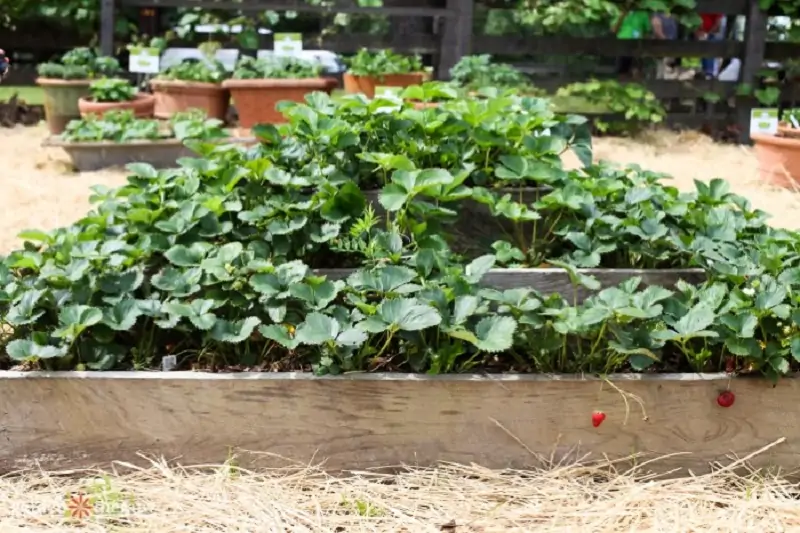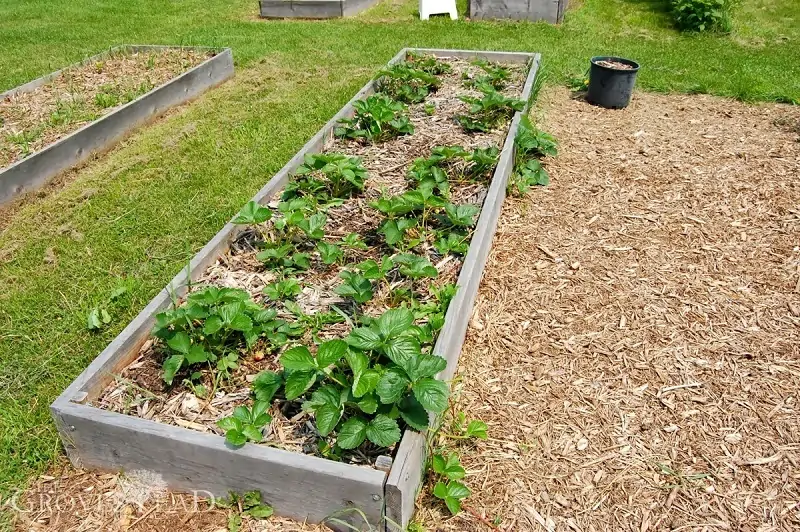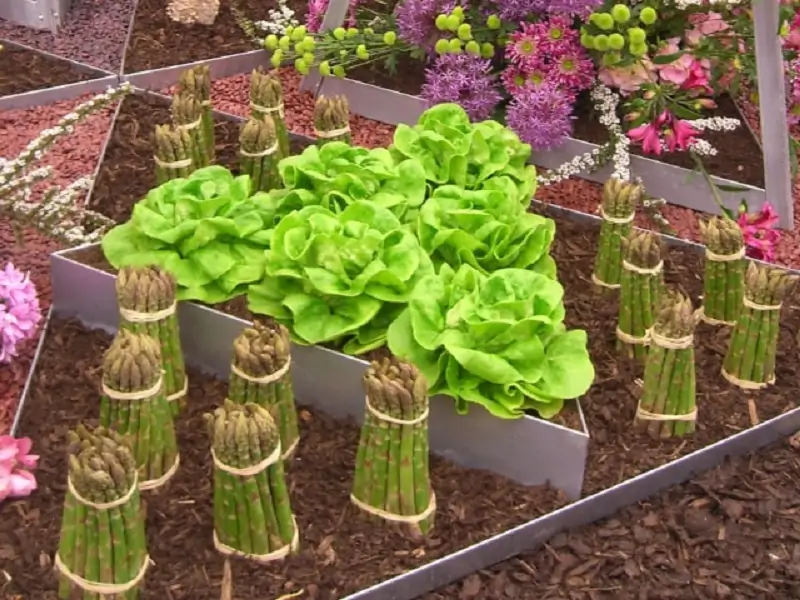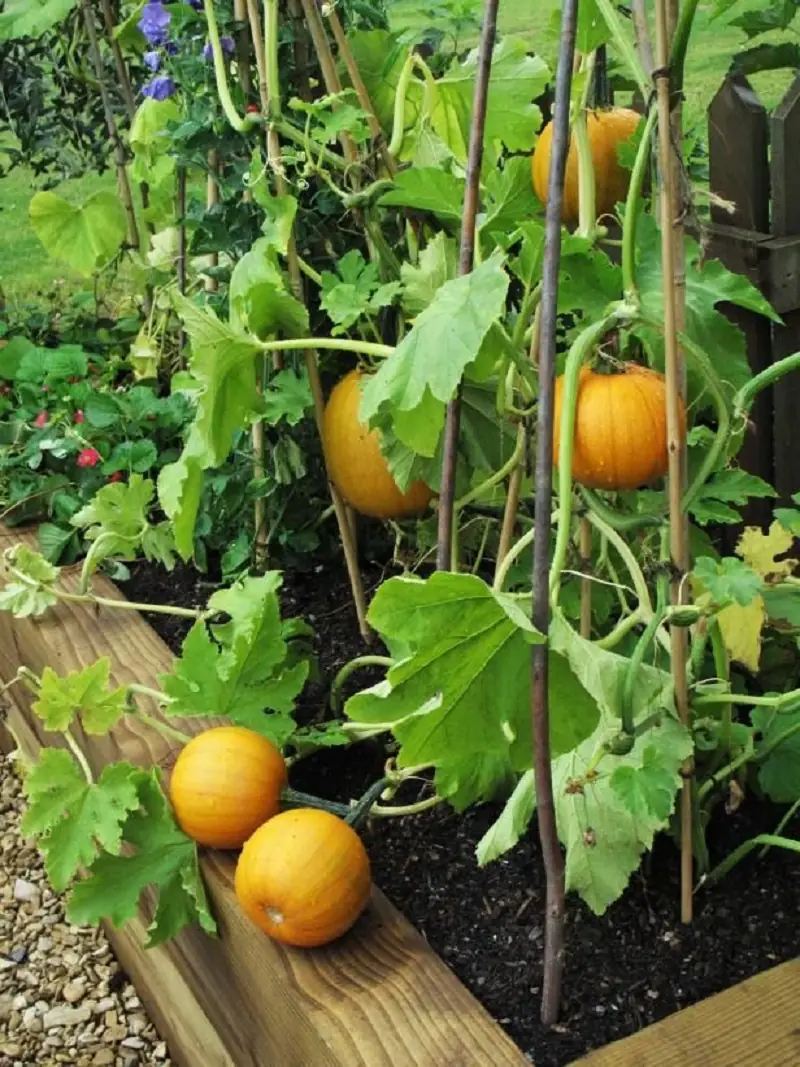Best Vegetables to Grow in Raised Beds: Detailed Guide

What are the best vegetables to grow in raised beds? Raised beds offer several benefits over traditional in-ground gardening, such as providing better drainage, improving soil quality, ensuring easier weed control, and preventing diseases caused by wet soil. While you can grow pretty much anything in a raised garden bed, vegetables like wheat, Rhubarb, and Artichokes can be a pain to nurture since they take up a lot of room.
The best vegetables to grow in elevated beds are those sensitive to water-logged soil because their roots can easily rot under consistently wet earth. So, switching to growing vegetables in raised beds with well-draining soil can help prevent issues like root rot. On the other hand, you won’t have to worry about space since this approach removes space limitations.
How Many Vegetables Can You Grow in a Raised Bed?
To answer this, you need to consider the size of your raised bed garden, the spacing requirements of the specific vegetable, and how many square meters a bed can accommodate.
Generally, you want to grow 1-2 large plants (such as a tomato or pepper plant) per square foot or 4-6 smaller plants (such as lettuce or radishes) per square foot. This suggests that if you have a raised bed 4 feet by 8 feet, you can plant 16 tomato plants or 32-48 lettuce or radish plants. However, ensure that your raised beds provide enough space for your plants to develop as overcrowded vegetable garden usually leads to poor growth and disease.
So, what vegetables are easy to grow with this gardening method?
Strawberries in Raised Beds

You can plant strawberries in just about anything, from containers to pots and even hanging baskets. The only caveat to this is that this sweet and plump berry is fast growing and detests competition, whether from weeds that may likely mature and take up space they need or stone, rock, or cemented ground that limits soil quality that ensures their growth.
Elevated gardens will make the task of ensuring that the soil in a raised bed has the best possible quality, and you can always add another bed so that your strawberry has plenty room to grow. Plus, this way to grow vegetables also helps you give your organic plant the required air circulation to stay healthy while protecting it from pests and diseases. Anyone who struggles with harvesting crops will also enjoy this idea as raised beds also help you get better access to the plants for pruning, harvesting, and weeding.
Tomatoes in Raised Beds

Yes, that’s right, you can grow tomato plants in raised beds. Technically, many guides are against doing so because tomatoes are tall growers and take up to 3’×3’ space. Of course, space is something you lack, and that’s why you are considering using a raised bed. Still, the benefit of growing tomatoes in raised beds is that it helps you control the growth of tomatoes so they don’t spread out and clutter your environment.
Cucumbers in Raised Beds

Believe it or not, cucumbers will grow in your raised beds as they can take on a vine or bushy form. If you’ve planted vine crops, you know they need enough space to thrive. Gardening in raised beds can give your cucumbers room to spread out without crowding other plants. Just make sure to use a trellis to give your cucumbers ample space: this will also make it easier to find your veggies when they are ready to harvest.
Potatoes in Raised Beds

Like tomatoes, people believe that potatoes won’t do well in above-ground gardening. Yet, the truth is that potatoes can be grown in raised garden beds to achieve better yields and healthier plants.
If you want to make this work, ensure the bed is not shallow and there is a thick level of garden soil in raised beds you use because otherwise the root of the potato may root before it sprouts and potato seeds may bear green and bitter tubers. So, be sure to give the spuds at least 4 to 6 inches of soil to mature well and thrive in raised beds. This way, they are not shallow but deep enough to accommodate their fast-growing nature.
When planting your potatoes, be sure to cut the seed potatoes into small pieces, each with at least one “eye” or sprout. As the plants grow, add more soil to the bed so that the soil of a raised bed is 8 to 12 inches deep to cover the stems and encourage more tubers to form.
Blueberries in Raised Beds

Where the quality of soil makes blueberries around your home difficult to grow, this berry will be a perfect choice for raised beds. The simple reason is that blueberries require specific soil conditions to thrive, including a low pH level (between 4.5 and 5.5), ant is it much easier to control the quality of soil of raised beds.
Besides this, blueberries also need good drainage and high organic matter to grow fresh and healthy. They will thrive in a raised bed as it can provide these ideal growing conditions and you will be able to control the soil mix and pH levels more easily than in case of in-ground soil.
Blueberry bushes can also grow quite tall and wide, making harvesting the fruit difficult. The good news is that using an elevated garden in your small space can help you keep the plants at a more manageable height, making it easier to pick the fruit.
Raspberries in Raised Beds

Raspberries are heavy feeders, and you can expect them to expand. A single bed can produce as much as 3 gallons of raspberries in a day. To help these plants thrive and not encroach on other vegetables nearby, provide them with space to grow . You can achieve this through an above-ground garden, but plant the raspberries at least 45 to 60 cm (18 to 24 inches) apart. Also, make sure the bed is 50cm (20 inches) deep and 90cm by 240cm (3 feet by 8 feet) long so the root has enough room to develop: raspberries don’t grow well in cramped spaces.
Herbs in Raised Beds

Generally, herbs, whether basil, thyme, or oregano, do better in a garden bed. The simple reason is that they have shallow roots, so planting them at ground level will make their roots rot faster. An above-ground bed helps you dictate how deep you want the earth to be. So, since herbs have shallow roots, you can create elevated beds that are not so deep in the ground to give your herbal plants the right amount of nutrients and soil quality they need to grow.
Asparagus in Raised Beds

Asparagus is a perennial crop and a staple in every kitchen. Elevated gardens can help with better drainage and improved soil quality when planting vegetables like this crop. Still asparagus has deep roots that can go up to 6 feet deep: hence, it needs enough depth to grow freely. An above-ground bed offers this advantage, but you may have to go beyond the 8 to 12 inches deep structure you use for other veggies and build one at least 18 inches deep. The result will be well worth the effort, though, as asparagus can be grown from seed right in your raised bed.
Corn in Raised Beds

Corn is a classic garden staple and one of the best vegetables for elevated beds. One of the many reasons most people don’t buy the idea of planting them ground-level is that they easily decay and lessen yields. If you’ve experienced this challenge, consider using an above-ground garden regardless of your available space. Above-ground gardens provide the crop with improved soil quality so you can enjoy higher yields all season: your corn will grow long and strait and will please your eye.
Pumpkins in Raised Beds

Pumpkins are a pain when it comes to their weight. Imagine growing an 800 lb pumpkin on a flimsy surface; you’ll be prepared to keep building new structures to hold their weighty veggie. If you have a sturdy bed, planting pumpkins won’t be challenging. Then again, that’s only half of the benefit of using an above-ground bed.
Pumpkins need well-draining soil rich in organic matter and a pH level of 6.0-6.8 to help them mature well, and a bed can provide this level of nutrients. They also have vigorous vines that can spread up to 20 feet, so they need plenty of space to grow. So, if you plan to grow them in an above-ground garden, make sure the seeds or seedlings are 2 to 3 feet apart in your raised bed space, provide support with a trellis or stake to help the vines grow vertically, keep them off the ground, and reduce the risk of pests.
Zucchini in Raised Beds

Here are the two reasons why zucchinis are one of the best vegetables for raised beds: these vegetables require proper space management and pest control actions to grow well.
Zucchini is a prolific vegetable that can take over your garden if you let it, and its sprawling vines can quickly become unruly. Growing zucchini in a 4 to 10-inch bed allows you to contain the plants in a defined space, making it easier to manage and keep them from taking over your garden. Simply put, you can keep the giant squash leaves contained and enjoy plenty of fresh zucchini all season.
Even a small raised bed can also help you keep pests out since Zucchini plants are quite the breeding ground for pests like squash bugs, cucumber beetles, and vine borers.
Dahlias in Raised Beds

Dahlia’s dread soils that do not drain well because they hold water for a longer time and will reduce the air circulation they need for healthy growth, which, in turn, invites fungal diseases.
Elevated gardens can give them the perfect 6.0 to 7.5 pH-balanced soil they need. They also provide better air circulation for this vegetable, so they don’t risk fungal diseases. If you live in regions that experience heavy and consistent rainfalls or around a flood zone, an above-ground garden will help you improve the draining capacity of the soil to ensure easier soil management.
Mushrooms in Raised Beds

Mushrooms have different variants, and each type has different growing requirements. For instance, you can plant mushroom species, like shiitake, oyster, and lion’s mane, in elevated gardens but variants like button mushrooms grow best in climate-controlled indoor environments.
Still, one reason species like the shiitake and lion’s mane do well in elevated gardens is that they require specific growing mediums like a blend of straw, sawdust, and other organic materials to provide support. On the ground level, you won’t find it particularly easy to prepare and attach these growing mediums, but with elevated gardens, you can easily attach them where you want them to be.
Growing Broccoli in Raised Beds

Broccoli is one vegetable that does not require special care, but they do require rich, fertile soil with a pH of 6.0 to 7.0 to grow. Elevated gardens allow for more control over the soil quality, and if your soil lacks quality, you can quickly add compost, peat moss, or vermiculite to adjust the pH and improve soil fertility.
Besides the soil quality, they also need proper drainage to prevent rooting roots and other diseases that can develop from too much moisture.
Onions in Raised Beds

Their small size compared to most vegetables makes onions one of the best choices for raised bed crops. So, if you need to grow them but lack space, one raised bed might be enough to grant you this convenience. On the other hand, they have a limited growing season, especially when planted ground-level. This means you might run out of onions in the kitchen. Nobody wants this. Growing onion plants in your raised bed help you extend their growing season from spring to fall by retaining heat longer than in-ground beds.
What’s more, if you have never tried this technique before, onions and such root vegetables as carrots will be a good choice to get the hang of growing crops in raised beds. Carrots grow particularly well in raised beds because they don’t require a lot of lateral space.
Cabbage in Raised Beds

Like pumpkins, cabbages have a massive size. When you don’t have enough room in your ground-level garden, an elevated bed will be a good alternative. More than this, they often attract pests. Using an elevated garden will help you protect your veggies from pests like cabbage worms and aphids, especially if you cover them with a protective mesh or netting.
Conclusion
Raised beds offer several advantages for growing vegetables, from better drainage to pest control, easier harvest, space optimization, better aeration, and improved soil quality. If you choose to grow carrots, onions, tomatoes, strawberries, potatoes, blueberries, raspberries, and herbs you can be sure of your success: all these are best vegetables to grow in raised beds so they do well with this gardening method.